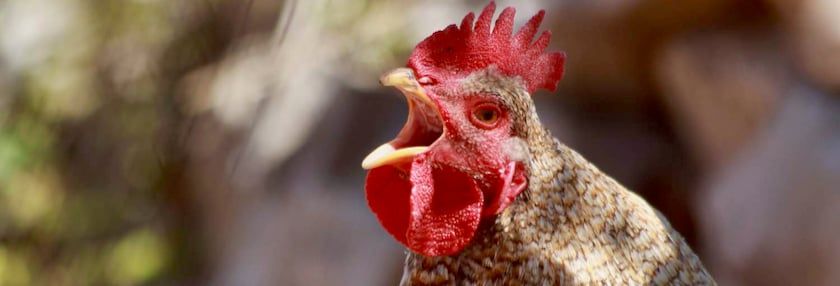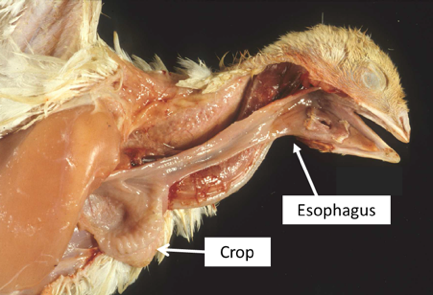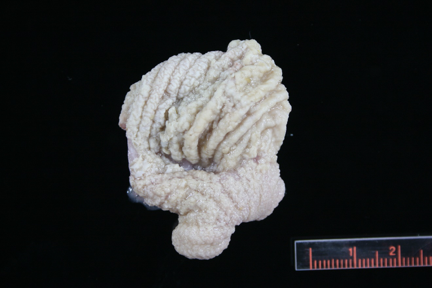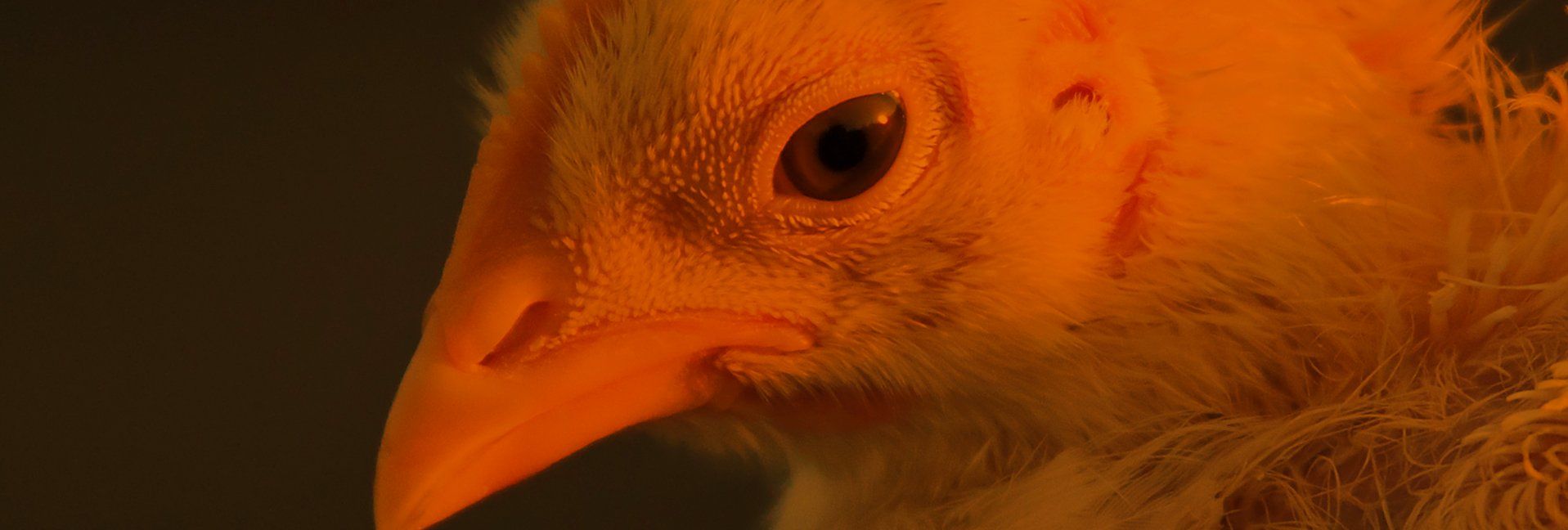Sour Crop


What is it and what to do about it
Usually diseases are named after someone, something, or someplace that doesn’t really give you too much useful information. The good thing about “sour crop” is at least you can deduce the anatomical location (the crop) and the smell (sour) of the disease in infected birds from he name.
Sour crop is a stinky but largely preventable disease of the crop.
What and where is the crop?
The crop is a pouch (see Figure 1) just “south” of the esophagus, used for softening feed and temporary food storage in prey species (predator avian species typically do not have a crop) of birds including chickens.
The purpose of the crop is to allow a bird to quickly swallow what food it can, store it in the crop, then fly to safety and digest the meal.
Food enters the crop after exiting the esophagus. The crop is a stretchy pouch that lies close to the skin in the neck region and after it fills up with food, the enlarged crop can be felt.

Figure 1: Picture of a chicken’s normal esophagus and crop. Picture courtesy of Dr. Gabriel Sentíes-Cué, UC Davis-CAHFS.
Sometimes, people feel this“swelling” and worry there is something wrong. Typically, as the food moves out of the crop and towards the stomach. the crop will return to its normal size.
What is sour crop?
It’s unpleasant and unmistakable. The smell is reminiscent of “sauerkraut” or “sour milk left in a baseball glove overnight.” The smell comes straight from your chickens’ mouth (actually from the crop) where the fungus Candidia albicans likes to take hold.
The fungus Candidia albicans comes from your chicken’s environment. Following exposure, the fungus infects the cells that line the crop and causes inflammation (Figure 2). While the infection does not generally cause death, the function of the crop is compromised, leading to decreased appetite and a drop-in egg production.

Figure 2 Picture of the "turkish towel" appearance of a crop tissue after Candidia albicans has been living in the mucosal layer. Picture courtesy of Dr. Gabriel Sentíes-Cué, UC Davis-CAHFS.
There’s no good treatment. Therefore, prevention including proper husbandry and biosecurity are essential toward protecting your birds from a Candidia albicans infection.
About the fungus
Candidia albicans exists normally in the environment worldwide and is a common environmental contaminant that is commensal with poultry—the fungus benefits and the host derives neither benefit nor harm. In other words, it is part of the normal flora of both humans and animals.
And just like with chickens and other animals, humans can become ill due to overgrowth of Candidia albicans.
How can chickens get exposed
While being exposed to “a little” Candidia albicans is not so bad, being exposed to a bunch (especially if other problems stress the immune system) can result in over-growth and infection.
Candidiasis is more common in young and growing chickens with undeveloped immune systems, although any age of chicken with a weakened immune system can fall victim to it.
Chickens can be exposed to a high concentration of Candidia by eating rotten/moldy food, or ingesting food and water contaminated with feces. Thankfully, candidiasis cannot be spread bird-to-bird; they only become sick after a high load exposure to the fungus.
How do chickens get sick?
Susceptible birds may have a weakened immune system due to concurrent viral, parasitic or bacterial infections, malnutrition (specifically a vitamin A deficiency), or after using strong antibiotics.
If a chickens’ immune system is compromised and they are exposed to the fungus, Candidia can take hold. resulting in thickening of the crop. This thickening can prevent crop emptying into the glandular stomach (called the proventriculus) for digestion, and cause the crop to bulge even more than normal after a meal.
As the food gets stuck in the crop, it will develop the characteristic “sour” smell.
Because food can’t be emptied into the proventriculus for digestion the chicken becomes anorexic and lethargic from not getting the nutrients it needs.
What are some signs of infection?
Look for non-specific signs of illness such a depressed demeanor, sunken eyes, decreased appetite, and regurgitation. If you notice a distended crop area that is not emptying as usual and feels doughy, this is a strong sign of a Candidia albicans infection.
A foul smell coming from the mouth of your chicken is a sign of severe disease.
Other, more invasive ways to diagnose an infection are by culturing the fungal organism from a swab of the crop, or performing a microscopic examination of the crop tissue post-mortem. These procedures require the assistance of a veterinarian.
So what is an impacted crop?
An impacted crop as the name implies is a crop that is impacted typically by fibrous material. Impacted crops can be the result of sour crop but not all impacted crops are sour crop.
Prevention tips
Like most poultry diseases, there is no specific treatment for sour crop—prevention is best!
Keep a clean and mold-free environment for your chickens to minimize their exposure to the fungus. This means minimizing stress, vaccinating for viral infections, offering a balanced diet, and minimizing exposure to the fungus by keeping their food, water, and litter fresh and free of contamination.
A balanced diet can help prevent infection, too. By feeding a commercially available diet, your birds’ nutritional needs should be met.
If your birds are not getting a balanced diet (from too much scratch or other scraps), a vitamin A deficiency in particular could pre-dispose your birds to sour crop.
What is the treatment for sour crop?
If you suspect your chicken has sour crop, do not induce vomiting. The regurgitated material can have the yeast in it, and by inducing vomiting the material coming up may get inhaled by your chicken thereby worsening the disease, or causing them to choke.
Your veterinarian can use local anesthetic to drain and wash out the crop and prescribe antifungal medications to help kill the Candidia. Antifungal medications can include Nystatin in the feed, or a ketoconazole prescription.
Remember, there is a “clearance time” required for medications in order to prevent residues in egg or meat. You can contact the Food Animal Residue Avoidance Databank (FARAD) regarding withdrawal times with respect to consumption of eggs and meat. Their website is www.farad.org/.
Because Candidia is not bacterial, treatment with an antibiotic will make things worse by wiping out the good bacteria in the digestive tract. This is one of the reasons it is preferred to diagnose the problem as opposed to “just trying an antibiotic.”
Once a chicken has been infected, the infection can reoccur. Often the underlying immune-suppressive condition may still be unidentified resulting in re-infection.
Finally, while I am typically skeptical of the efficacy of apple cider vinegar and there is no scientific literature to support the following, adding vinegar to drinking water to acidify the intestinal contents can potentially make the gut environment less favorable for fungal growth and may help prevent reinfections.
Regardless, focusing on prevention is less expensive and results in better outcomes than treating infected chickens.
Tags:Pitesky's Poultry

Chicken Whisperer is part of the Catalyst Communications Network publication family.












